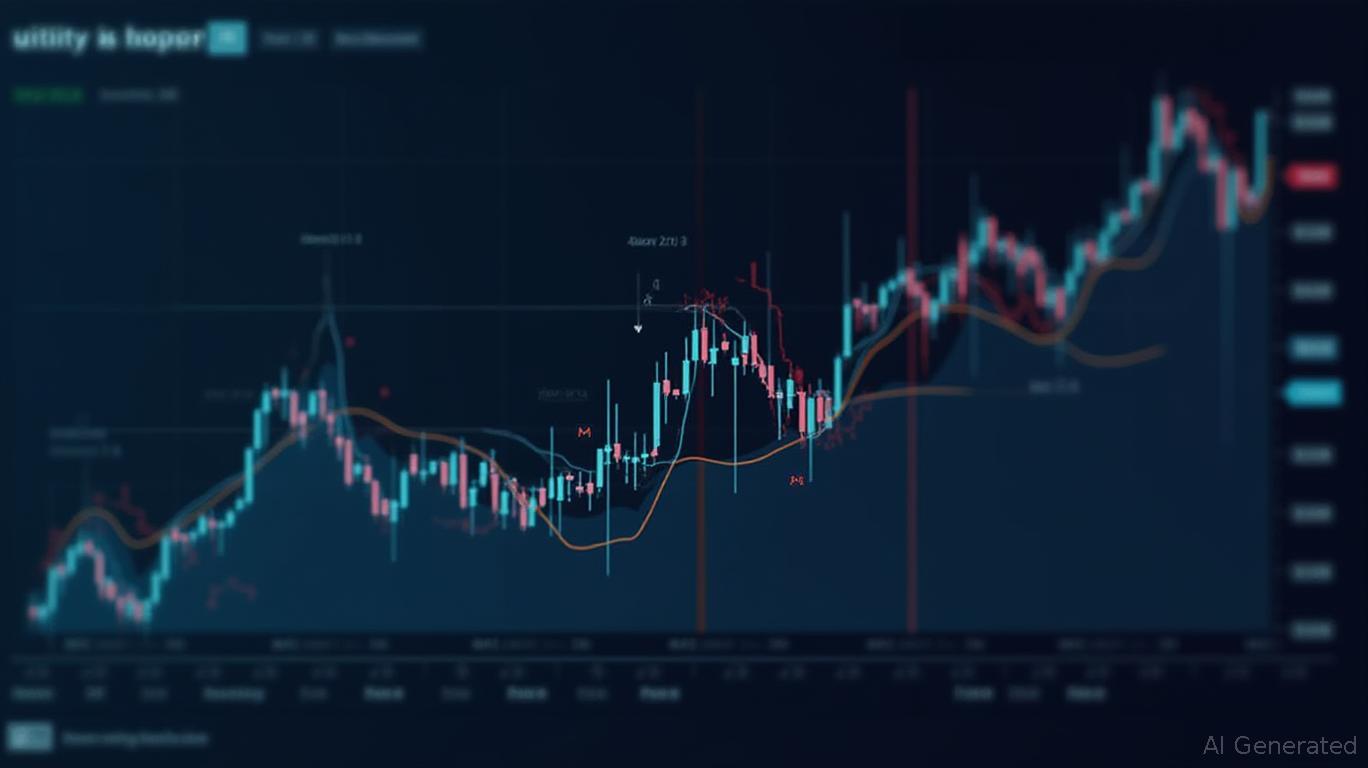Defensive Contrarians and the Fed's Crosscurrents: Navigating Volatility in Utilities, Healthcare, and Beyond
The U.S. equity market finds itself in a precarious balancing act, with Federal Reserve policy uncertainty and Middle East tensions fueling volatility. For contrarian investors, this environment presents a rare opportunity to position portfolios for asymmetric returns: buying undervalued defensive sectors like utilities and healthcare while shorting overexposed cyclical stocks. Here's how to capitalize on this crosscurrent.
The Fed's “Wait-and-See” Trap: Rate Cuts Delayed, but Not Forgotten
The Federal Reserve's June decision to hold rates steady at 4.25%-4.5% underscored its caution. While the CME FedWatch tool currently assigns a 60% probability to a September rate cut, this figure masks internal Fed divisions. Seven of 19 officials oppose any cuts in 2025, citing unresolved risks from tariffs and inflation. Meanwhile, the median “dot plot” projects two cuts by year-end, trimming rates to 3.9%.
This ambiguity creates a “wait-and-see” trap for cyclical sectors. Rate-sensitive equities like real estate and tech, which rallied on earlier rate-cut optimism, now face a reckoning. If inflation (currently 3% for PCE) resists downward pressure due to tariff-driven costs or energy spikes, the Fed may delay easing further. Utilities and healthcare, by contrast, offer stability: their dividends and pricing power are less tied to rate cycles.
Middle East Tensions: The Energy Spillover Risk
Geopolitical risks are amplifying volatility. The Israel-Iran conflict has pushed Brent crude to $85/barrel, with further spillover likely if hostilities escalate. Energy market instability threatens two cyclical sectors:
1. Industrials: Higher oil prices squeeze margins for airlines, logistics, and construction.
2. Financials: Banks leveraged to energy loans face credit risks if sanctions disrupt regional trade.
Defensive sectors, however, benefit indirectly. Utilities with renewable energy exposure (e.g., NextEra Energy) gain as energy security becomes a priority. Healthcare stocks, insulated from oil prices, can outperform if geopolitical stress boosts demand for emergency preparedness and telemedicine.
European Diplomacy: A Wildcard Catalyst for Sector Rotation
European efforts to mediate the Israel-Iran conflict could reduce energy volatility, creating a “buy the dip” moment for cyclical stocks. However, the odds of swift resolution remain low. Investors should instead focus on European diplomatic progress as a binary catalyst:
- If successful: Cyclical sectors rebound, but defensive holdings may underperform.
- If stalled: Utilities and healthcare retain their premium.
This duality makes shorting cyclical stocks (e.g., industrial conglomerates, semiconductor firms) a hedge against geopolitical uncertainty.
Contrarian Playbook: Defensive Buys and Cyclical Shorts
Utilities:
- NextEra Energy (NEE): Low beta (0.7), 2.7% dividend yield, and 30% exposure to renewables.
- Duke Energy (DUK): 3.1% yield, regulated rate base, and inflation-linked contracts.
Healthcare:
- Johnson & Johnson (JNJ): 2.3% dividend yield, diversified pipelines, and pricing power in pharma.
- UnitedHealth (UNH): Managed-care leader with 1.8% yield and aging population tailwinds.
Cyclical Shorts:
- Caterpillar (CAT): Industrial giant with 60% exposure to energy and infrastructure.
- NVIDIA (NVDA): Rate-sensitive semiconductor stock with 40% revenue tied to cyclical cloud computing.

Risks to the Strategy
- Unexpected Fed Hawkishness: A hawkish Beige Book or inflation surprise could spike rates, hurting utilities.
- Geopolitical Resolution: A swift Iran-Israel deal might trigger a cyclical rebound, squeezing shorts.
- Debt Ceiling Gridlock: U.S. fiscal instability could amplify market swings.
Conclusion
The Fed's “wait-and-see” stance and Middle East tensions have created a fertile ground for contrarian plays. Utilities and healthcare offer asymmetric upside in a volatile market, while overleveraged cyclical stocks present shorting opportunities. Monitor the CME rate cut probabilities and oil prices closely—these metrics will signal when to pivot. For now, bet on stability in the storm.
Investment advice: This analysis is for informational purposes only. Consult a financial advisor before making decisions.

Comments
No comments yet